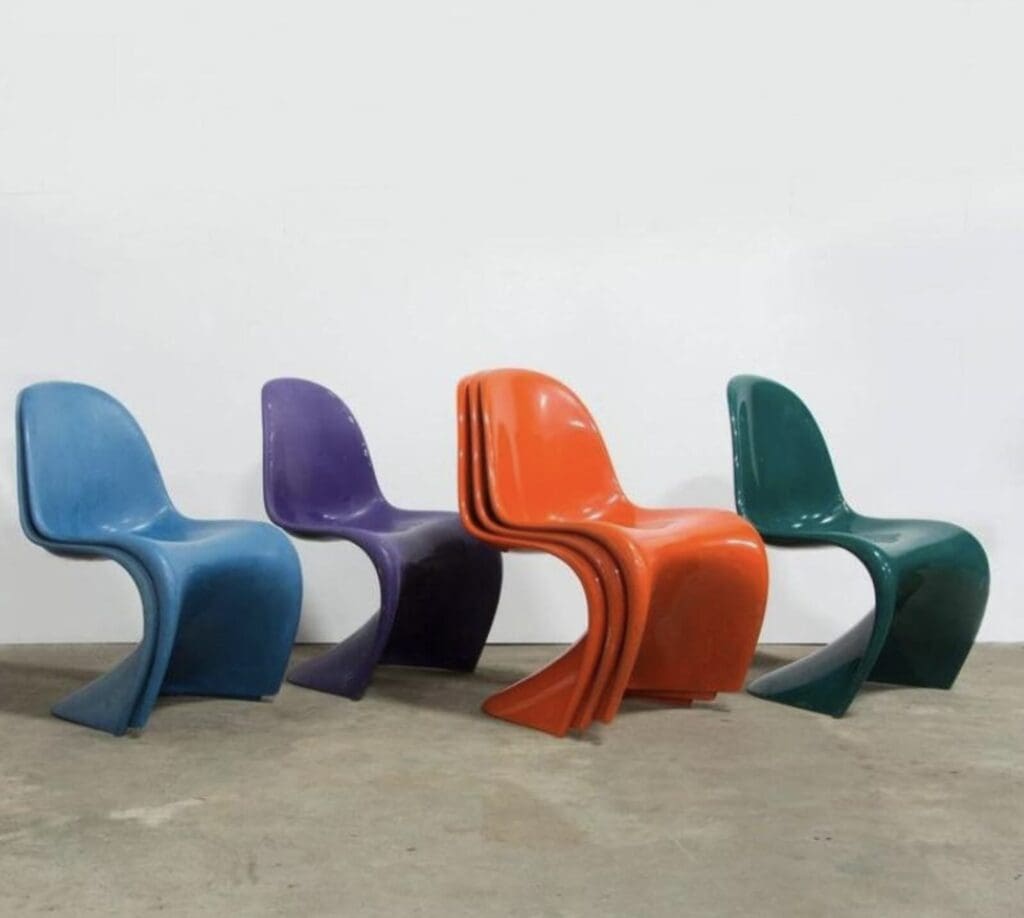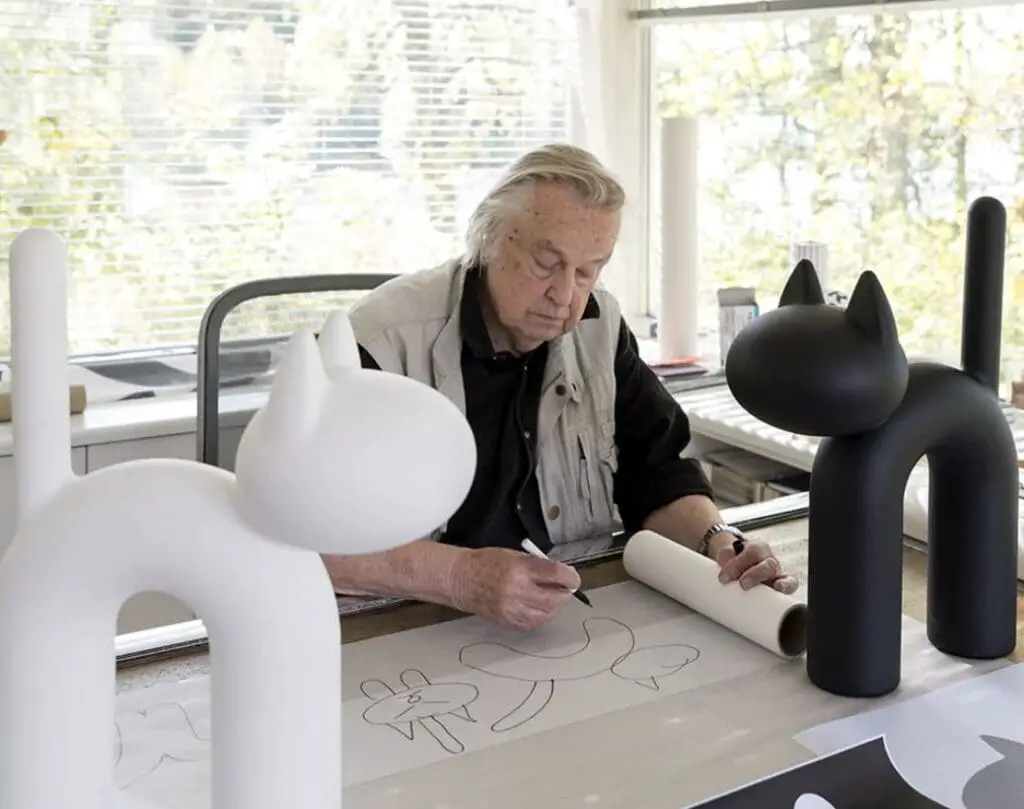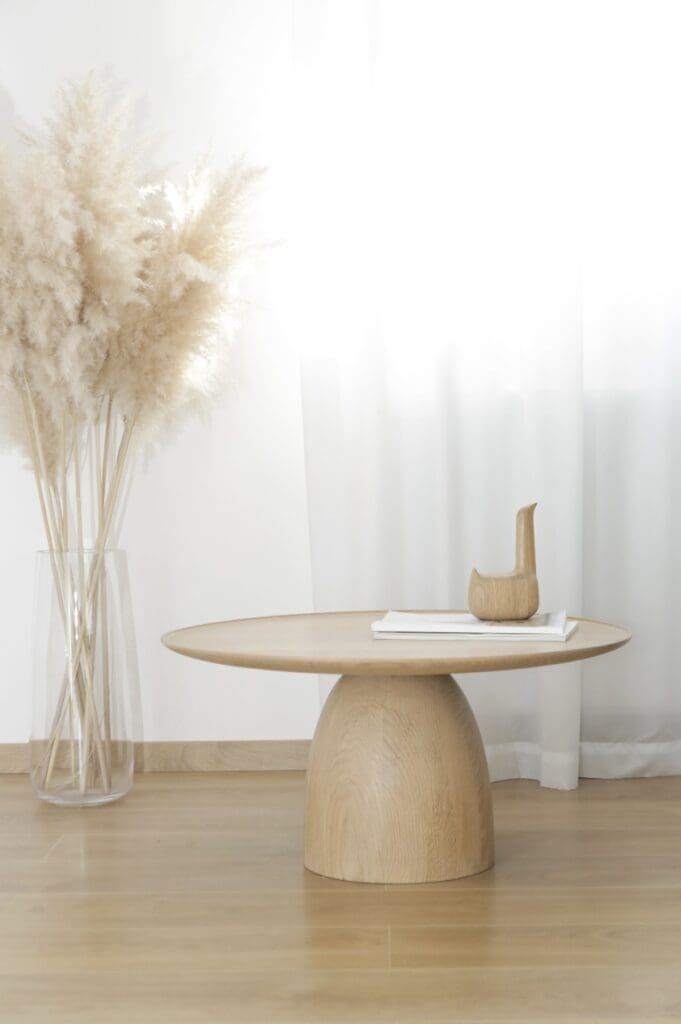Since living in Sweden, I’ve been enamored with Scandinavian design, which has maintained its global appeal. Scandinavian design is a great look and trend.
Emerging in the early 20th century, this design trend has impacted architecture, furniture, and interior decor. It’s celebrated for its minimalist charm, practical usability, and seamless blend of form and function. Read on as we explore more about this furniture design trend.
Table of Contents
- The History Of Scandinavian Furniture Design: Simplicity And Functionality Across Eras
- More Than Just Furniture: A Broader Impact Of Scandinavian Design
- A Design Philosophy For The Ages – Scandinavian Design
- Related Content
The History Of Scandinavian Furniture Design: Simplicity And Functionality Across Eras
The Scandinavian design movement has significantly influenced architecture, furniture, and interior design since it burst onto the global scene in the early 20th century. Known for its minimalist aesthetic, functional utility, and harmonious integration of form and function,
Scandinavian design has its roots deeply set in the Nordic countries: Denmark, Finland, Iceland, Norway, and Sweden. Read on as we aim to provide an insightful journey into the history of Scandinavian furniture design and its enduring impact on global aesthetics.
The Early Days: A Magazine And A Mission
One could argue that the formal origins of Scandinavian design date back to around 1915 when Denmark’s “Society for Decorative Arts” launched a magazine called Skønvirke, meaning “Graceful Work.
This magazine aimed to promote local artisans and their uniquely Nordic aesthetic. The launch of Skønvirke can be seen as a critical milestone in galvanizing what would later become the Scandinavian design movement, essentially promoting the philosophies of simplicity, minimalism, and functionality.

The Interwar Years: An Exemplary Style
During the period between World War I and World War II, Europe witnessed a collective quest for modernity and innovation in design. This was the era when Scandinavian designers distinguished themselves by developing a unique style that harmoniously blended creativity with industrial capabilities.
While maintaining an eye on the cost implications of mass production, Scandinavian designers innovated new lines that showcased the product’s structure and the inherent qualities of the materials used.
This fine balance led to designs featuring delicate profiles, slight inclinations, and soft, flowing features.
The Golden Era: Leaders And Icons
Starting from the 1930s, a cohort of visionary designers like Alvar Aalto, Arne Jacobsen, Borge Mogensen, Hans J. Wegner, Verner Panton, Poul Henningsen, and Maija Isola ushered in what is often referred to as the “golden period of Scandinavian design.”
Hans J. Wegner’s Chinese Bench from 1946, constructed from ash wood, embodies this era’s ethos. The bench combined the wood’s natural hue with a design that harmonized form and function seamlessly.
These icons helped shape Scandinavian design and make it today’s critical design trend.
Recognition And Expansion: The Lunning Prize And Beyond
The Lunning Prize, awarded between 1951 and 1970, was crucial in establishing Scandinavian design as a recognized and distinct form of design language.

Moreover, the 1954 “Design in Scandinavia” exhibition at the Brooklyn Museum marked the official advent of “Scandinavian Modern” furniture in America, widening its appeal and influence.
More Than Just Furniture: A Broader Impact Of Scandinavian Design
While its most recognizable form is furniture, Scandinavian design principles have also been applied to various products, including consumer electronics, mobile phones, and automobiles.

The design methodology was adaptable enough to evolve with plastic processing technologies, a feat most notably achieved by the renowned Danish designer Verner Panton.

His iconic works, such as the Stacking Chair and the Panton Chair, revolutionized furniture design using a single mold for production. These creations testify to the synergies between creative expression and technological advancement.
Contemporary Contributions: Finnish Innovations
In more recent history, Finnish designer Eero Aarnio has built upon the foundations laid by predecessors like Verner Panton. Aarnio’s work continues to push the boundaries of form and function, experimenting with new materials and design philosophies.

A Design Philosophy For The Ages – Scandinavian Design
Scandinavian furniture design has undergone a transformative journey since its inception in the early 20th century. While it may have begun as a local movement to showcase Nordic craftsmanship, it has grown into a global phenomenon that has significantly impacted various industries and design languages.
As we have seen, the movement’s initial days were marked by a struggle to create a unique aesthetic. This early period set the stage for the golden era of the 1950s and, eventually, for the broad impact Scandinavian design enjoys today.

At its core, however, the guiding principles of simplicity, minimalism, and functionality remain the same.
Scandinavian furniture design’s clean lines and functional elegance offer a refreshing contrast in a world that often feels overly complex. And in that sense, one could argue that the timeless allure of Scandinavian design is more relevant now than ever before.
If you’re interested in producing Scandi furniture for export and manufacturing, we at Mondoro would be delighted to discuss how we can assist you.
Find out more about how Mondoro can help you create, develop, and manufacture excellent home decor and furniture products – don’t hesitate to contact me, Anita. Check out my email by clicking here or become a part of our community and join our newsletter by clicking here.
Mondoro gives out a FREE Lookbook to anyone interested. You can receive a copy of our latest Lookbook by clicking here.
Listen to our Podcast called Global Trade Gal. You can find it on all major podcast platforms. Try out listening to one of our podcasts by clicking here.
Subscribe to our Mondoro Company Limited YouTube Channel with great videos and information by clicking here.
Related Content
Nordic Vs. Scandinavian Design Is There A Difference?
In interior design, “Nordic” and “Scandinavian” are often used interchangeably. These design styles have gained immense popularity recently for their clean lines, functional approach, and timeless aesthetics.
You can learn more by reading our blog, Nordic Vs. Scandinavian Design Is There A Difference? by clicking here.
Scandinavian Design And The United States 1890 – 1980 Impact
I recently attended an exhibition at the Milwaukee Art Museum entitled Scandinavian Design and The United States 1890 – 1980. This exhibition was co-organized by the Milwaukee Art Museum, The Los Angeles County Museum of Art, Nationalmuseum Sweden, and Nasjonalmuseet Norway.
To learn more, you can read Scandinavian Design And The United States 1890 – 1980 Impact by clicking here.
Wabi-Sabi: Embracing Imperfection And Transience In Design
In an era where everything is mass-produced to perfection, where symmetry is celebrated, and where glossy, flawless finishes are the norm, the ancient Japanese design philosophy of Wabi-Sabi offers a breath of fresh air. Instead of striving for perfection, Wabi-Sabi celebrates imperfection and sees beauty in the simple, rustic, and imperfect life and design choices.
You can discover more by reading Wabi-Sabi: Embracing Imperfection And Transience In Design by clicking here.


